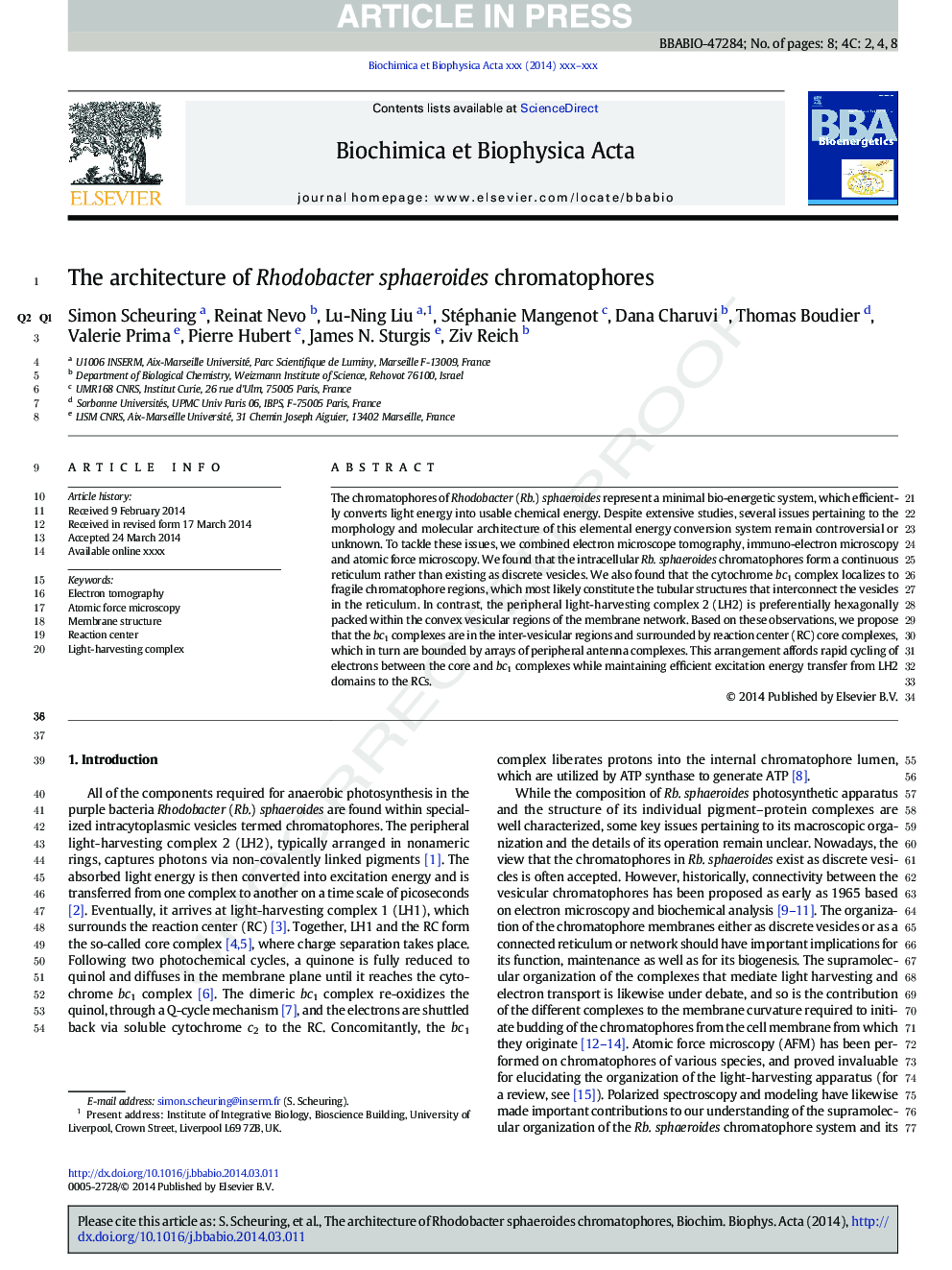| Article ID | Journal | Published Year | Pages | File Type |
|---|---|---|---|---|
| 10795468 | Biochimica et Biophysica Acta (BBA) - Bioenergetics | 2014 | 8 Pages |
Abstract
The chromatophores of Rhodobacter (Rb.) sphaeroides represent a minimal bio-energetic system, which efficiently converts light energy into usable chemical energy. Despite extensive studies, several issues pertaining to the morphology and molecular architecture of this elemental energy conversion system remain controversial or unknown. To tackle these issues, we combined electron microscope tomography, immuno-electron microscopy and atomic force microscopy. We found that the intracellular Rb. sphaeroides chromatophores form a continuous reticulum rather than existing as discrete vesicles. We also found that the cytochrome bc1 complex localizes to fragile chromatophore regions, which most likely constitute the tubular structures that interconnect the vesicles in the reticulum. In contrast, the peripheral light-harvesting complex 2 (LH2) is preferentially hexagonally packed within the convex vesicular regions of the membrane network. Based on these observations, we propose that the bc1 complexes are in the inter-vesicular regions and surrounded by reaction center (RC) core complexes, which in turn are bounded by arrays of peripheral antenna complexes. This arrangement affords rapid cycling of electrons between the core and bc1 complexes while maintaining efficient excitation energy transfer from LH2 domains to the RCs.
Keywords
Related Topics
Life Sciences
Agricultural and Biological Sciences
Plant Science
Authors
Simon Scheuring, Reinat Nevo, Lu-Ning Liu, Stéphanie Mangenot, Dana Charuvi, Thomas Boudier, Valerie Prima, Pierre Hubert, James N. Sturgis, Ziv Reich,
